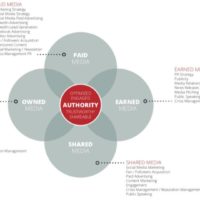
Securing employee engagement in a deafening environment
Information overload is the signature malady of our times
By R.S. Raghavan, CEO, Animaker
According to a study by Microsoft, the average human attention span has actually declined by almost 40 percent – from 12 seconds down to 8 – just since 2000. Efforts to attract and hold consumers’ attention long enough to convey a significant message have become free-for-alls with competition for prospects’ eyes and ears reaching unprecedented levels. One result of having an overwhelming amount of information to sort through is that people experience difficulty understanding issues and making decisions. Although there may have been a time, back in the Middle Ages, when it was still possible for a determined scholar to learn pretty much everything that had ever been written, mastering even a fraction of a single specialty today is almost beyond an individual’s reach.
However, the problem is not limited to scholarship. Younger people – many of whom grew up in an environment defined by personal computers, smart phones, and online games – experience the same thing at work. They become disoriented, remote, less engaged, and less committed to their jobs. Turnover increases. Even in their personal lives as consumers, brand awareness declines. For employers, it is almost like having to onboard a workforce afflicted with ADD. But there are alternatives to demanding that new hires plow through mountains of boring policy and technical documents in order to become assets to their employer.
The power of visualization
One of the most powerful is to tap into a form of learning that is both ancient, intuitive and language-agnostic: graphic icons. In Mexico City, for example, where many people are either illiterate or unable to read Spanish, the subway system uses icons to identify each stop. Those pictograms, designed to be understood by everyone, allows Metro passengers to travel successfully from grasshopper to duck, via eagle head and fountain.
Visual graphics – including icons, charts, video presentations, and animation – are certainly not the only way that people learn. But they are powerful and they transcend the limitations of language. Beyond that, of the three major learning styles – visual, auditory, and kinesthetic – approximately 65 percent of the world’s population are considered visual learners. According to 3M Corporation, the human brain processes visual information 60,000 times faster than text, and 90 percent of the information coming into the brain is visual. In other words, there could be a huge advantage in conveying content that’s currently buried in text documents using visual means instead.
DIY animation and live video presentation
Yet, despite their awareness of the impact that visuals can have on learning, school administrators and business employers have been reluctant to make extensive use of them. The main reason for their hesitation is that they are generally understood to be too expensive and time-consuming to produce. Their understanding is based on traditional technologies which were, in fact, expensive and labor-intensive. They required specialized equipment, highly trained operators, and frequently took too much time to produce in order to be available at the speed with which they were frequently needed. That’s no longer the case.
New technologies using standard desktop PCs, with minimal training, an extensive library of ready-made characters and settings, and the ability to combine these elements with original voice and imagery, are now available. Their use can capture the essential information associated with onboarding new workers, with the organization’s work processes, with the company’s products and services, and with the market environment in which the organization operates.
Just as important, by using visual media that essentially all new employees have felt comfortable with throughout their lives, animated and live stock video presentations become memorable, engaging, actionable and frequently humorous ways of transmitting essential information. The organization ends up talking to its staff in the language they best understand. And doing so can help to cut through the noise of conflicting sources, as well as the difficult-to-access ones, that stand in the way of employee engagement.
# # # #




